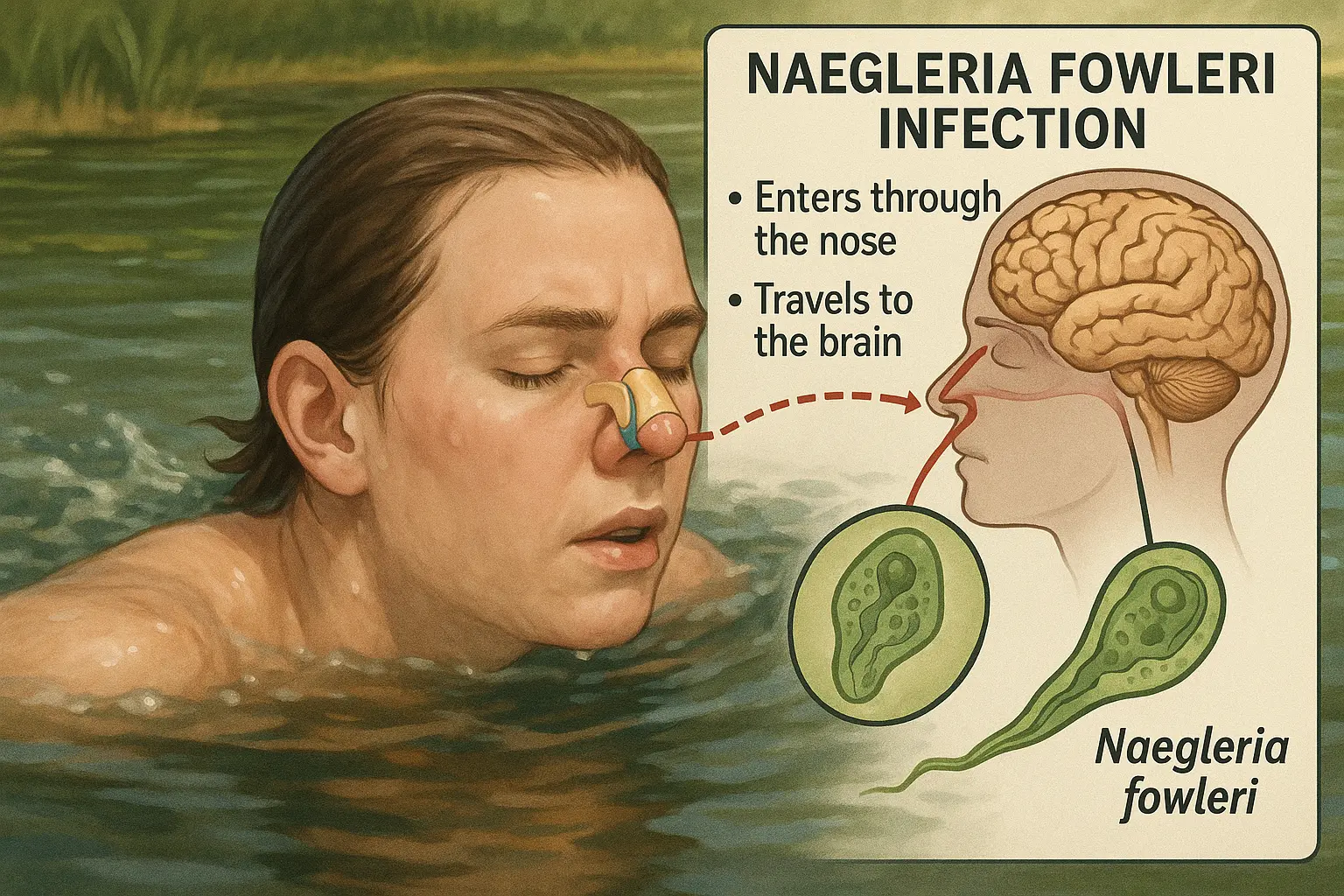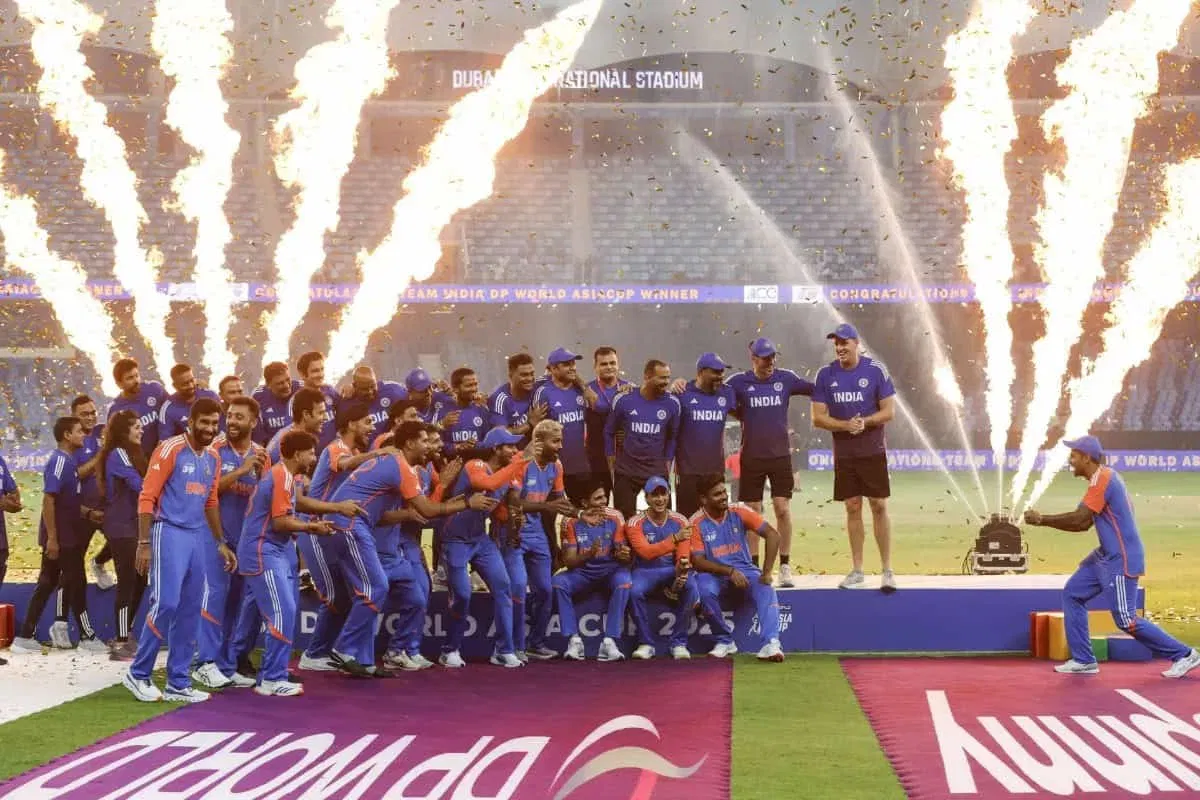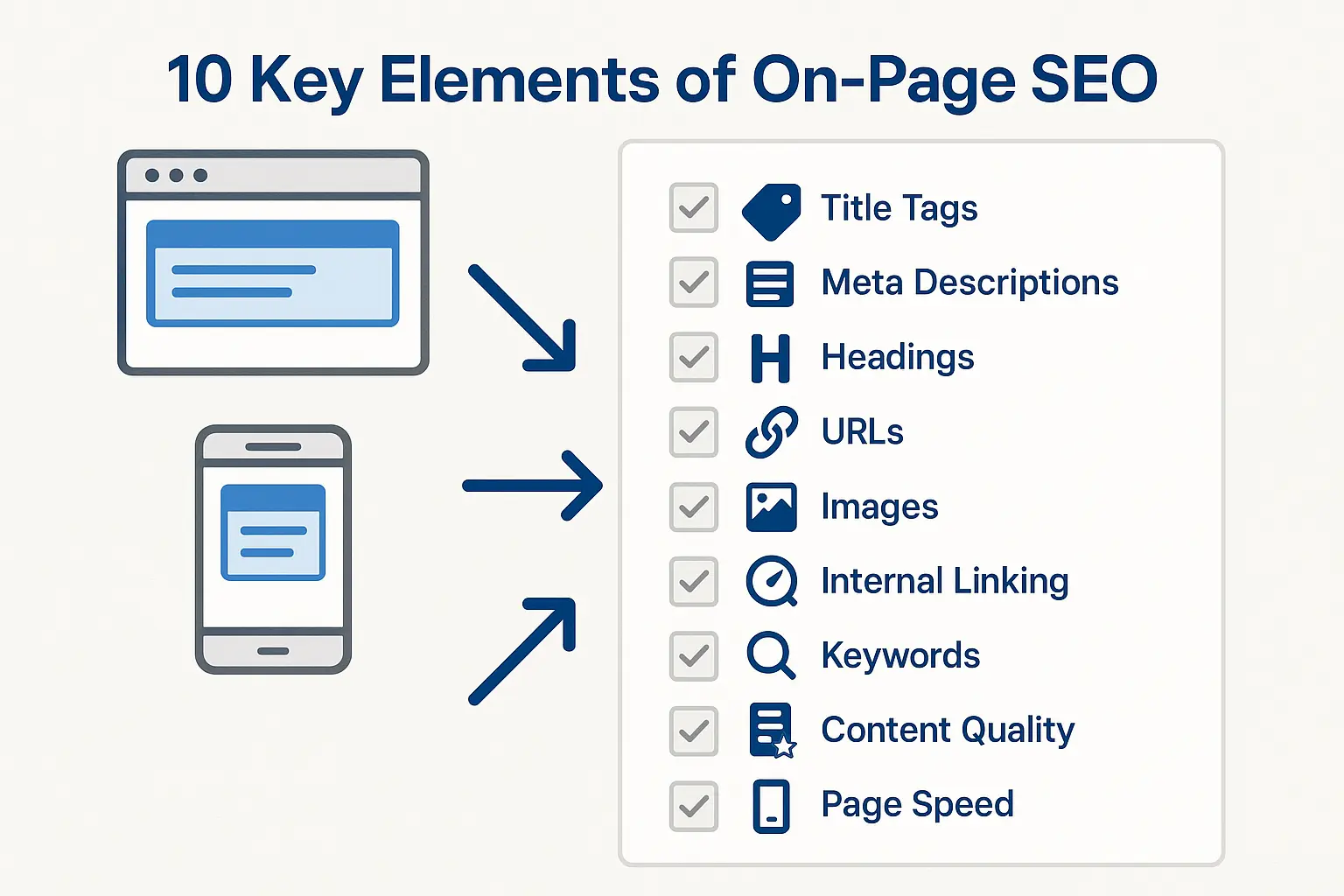Brain-Eating Amoeba in Kerala: What You Need to Know

News of rising “brain-eating amoeba” cases in Kerala has raised public concern. With confirmed infections and several deaths reported, understanding the basics of this rare but dangerous organism is important. Clear information helps reduce confusion, separate fact from misinformation, and highlight what individuals and communities can actually do to minimise risk.
What Is the Brain-Eating Amoeba?
The infection is caused by Naegleria Fowleri, a free-living amoeba found in warm freshwater environments. It causes Primary Amoebic Meningoencephalitis (PAM), a rare but often fatal brain infection.
Globally, PAM is rare but has a 95–97% fatality rate. This means out of 100 reported cases, only a handful survive. In Kerala, the current fatality rate is lower—around 24%—because of early detection and aggressive treatment.
Where Does Naegleria Fowleri Thrive?
Naegleria fowleri typically grows in:
- Warm lakes, ponds, rivers, and hot springs
- Untreated wells and water storage tanks
- Poorly maintained swimming pools
- Stagnant freshwater during hot seasons
It is not found in salt water or properly treated, chlorinated water sources.
How Does Infection Occur?
The amoeba enters the body through the nose, not by drinking contaminated water. Key exposure routes include:
- Diving, swimming, or bathing in warm, untreated freshwater
- Nasal cleaning using contaminated water
- Using untreated well or tap water for religious or personal cleansing practices
Once inside the nasal passages, the amoeba travels via the olfactory nerves to the brain, where it causes infection.
It is important to note:
- Not spread by drinking water
- Not spread from person to person
Early Symptoms to Watch For
Symptoms usually appear 1–9 days after exposure. They may resemble common illnesses, making early diagnosis difficult.
Initial signs:
- Headache
- Fever
- Nausea or vomiting
- General fatigue
Later signs:
- Stiff neck
- Confusion and disorientation
- Seizures
- Hallucinations
- Loss of balance
- Progression to coma
Because early symptoms can mimic those of other types of meningitis, delays in correct diagnosis are common.
Diagnosis Challenges
- CSF (cerebrospinal fluid) analysis may show abnormalities, but it can be confused with bacterial or viral meningitis.
- Specialised culture tests confirm the diagnosis but take several days.
- Rapid diagnostic tools are under development but not yet widely available.
This delay is one reason why PAM often has a poor outcome.
Treatment Options
There is currently no guaranteed cure for Naegleria Fowleri infection. However, survival is possible with fast detection and aggressive management.
Treatments may include:
- Amphotericin B (an antifungal medication).
- Miltefosine (used as an anti-amoebic drug in combination therapy).
- Supportive ICU care, including mechanical ventilation and oxygen supply.
Kerala has reported better survival outcomes due to early use of Miltefosine along with consistent ICU monitoring.
Kerala’s Government Response
Authorities in Kerala are taking multiple steps to contain risk and improve outcomes:
- Chlorination of public water bodies, swimming pools, and storage tanks.
- Testing of community water sources.
- Public advisories on safe bathing and nasal cleaning practices.
- Referral protocols to tertiary hospitals for suspected cases.
- Enhanced diagnostic capacity at medical centres.
Cases are reported across different districts, and infections have occurred in people of all age groups—from children to the elderly.
Individual Prevention Measures
Practical steps can significantly reduce exposure risk:
- Avoid swimming or diving in warm, stagnant freshwater.
- Use nose clips if entering untreated water is unavoidable.
- Do not use untreated tap or well water for nasal cleaning or rinsing.
- Use only boiled and cooled, distilled, or properly filtered water for personal use.
- Regularly clean and chlorinate private water tanks.
Community-Level Prevention
Larger-scale interventions are essential to reduce community risk:
- Chlorinate and monitor public water supplies
- Run awareness campaigns about nasal transmission and preventive practices
- Improve diagnostic and surveillance networks for early detection
- Train healthcare workers to distinguish PAM from bacterial or viral meningitis
Research and Future Directions
Since Naegleria fowleri naturally exists in freshwater, it cannot be eliminated. Current research focuses on:
- Developing faster diagnostic tests.
- Testing new anti-amoebic drugs.
- Creating clinical protocols for aggressive therapy.
Kerala’s comparatively lower fatality rate is attracting global attention as a possible model for better management strategies.
Conclusion
Naegleria Fowleri infections are rare but serious. In Kerala, 69 cases and 19 deaths have been reported so far. With early diagnosis and aggressive treatment, survival is possible, but prevention remains the strongest defence. Avoiding unsafe water practices and ensuring the chlorination of water sources are practical ways to reduce risk.
Stay informed, stay cautious, and prioritise safe water practices.
Disclaimer: This article is based on publicly available reports and independent analysis. Readers are encouraged to consult multiple sources for a complete picture.









No comments yet. Be the first to comment!